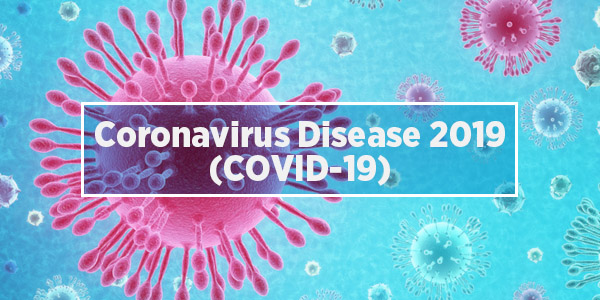Actions
Type

|
|
|
MHA Today is provided as a service to members of the Missouri Hospital Association. Additional information is available online at MHAnet.
|
|
|
COVID-19 Updates |
|

For the latest updates and most current information on coronavirus disease 2019, visit MHA’s website. |
|
|
Insights |
|
|
As aircrafts have evolved, so has their instrumentation. One can imagine the cockpit of a crop-dusting biplane from the 1940s contained very few indicators. To determine altitude or attitude, you might simply look at the horizon or down. Not so for a Boeing 787. Virtually every aspect of flight is monitored in real time and instruments of all stripes help the pilot understand not only where the plane is in time and space, but what other traffic is in the air, weather and other predictive measures to which the pilot may need to react. When we entered the COVID-19 crisis in Missouri, we had biplane-like data. Since January, our data has matured significantly, and the indicators now are much more robust. Testing data, which is indicative of prevalence, was adopted by the federal government as a prime indicator for states to establish “red zones.” The federal red-zone threshold for the proportion of tests coming back positive is 10% or more. Several of our regions have and continue to exceed this rate. Viral spread is important. However, it only is one of numerous indicators that decision-makers can use to inform choices. Painting Missouri red for the purposes of COVID-19 doesn’t necessarily inform local decisions, nor does it account for the hospital and health care resources that have been so critical since we began our journey toward a “flattened curve.” Having basic, testing-driven, statewide numbers is flying with an altimeter, artificial horizon and fuel gauge. When you have radar that can track weather and other planes, have a terrain alert system, and indicators for the status of the control surfaces, you can avoid hazards much more effectively and protect the passengers. Testing can provide a leading indicator. However, just as the leading edge of an aircraft’s wing is the first surface to touch the air, it is the full shape of the wing that provides lift. This week, we saw promising numbers in many parts of the state relative to the virus’ reproductive rate, or Re. Smart decisions from the statewide to the local level — informed by the panoply of data now available — will help us avoid turbulence and protect lives. All leaders need to do is trust their instruments. P.S. — Yesterday, MHA released a poster in cooperation with the Missouri Department of Elementary and Secondary Education and the Missouri School Boards’ Association designed to educate and promote masks, hand hygiene and social distancing in elementary and middle schools. Schools are returning to in-person classes throughout the state and the poster is designed to demonstrate that everyone has a part to play in COVID-19 mitigation efforts. We are working with DESE to distribute the poster to several thousand schools statewide. An 11×17 printable version is available. Please use and share the tool as appropriate in your community. Let me know what you are thinking. Herb B. Kuhn |
|
|
Regulatory News |
|
HHS Awards $35 Million To Support Rural Health InitiativesStaff Contact: Daniel Landon or Andrew Wheeler The Health Resources and Services Administration of the U.S. Department of Health and Human Services announced $35 million in grant awards to support various rural initiatives. The initiatives address systems development in the Delta Region, rural health research centers, rural HIV/AIDS planning, rural residency development, training for rural telementoring, rural telehealth research and telehealth network grants. MHA Distributes Analysis For FFY 2021 Final Medicare IRF PPSStaff Contact: Andrew Wheeler MHA has prepared an analysis that illustrates the financial effect of the federal fiscal year 2021 final Medicare Inpatient Rehabilitation Facility Prospective Payment System rule. This analysis, which will be available online for authorized users of HIDI Analytic Advantage,® includes a summary for the nation, Missouri, health systems and individual hospitals. For Missouri, the overall effect of the final updates for FFY 2021 is an estimated payment increase of 1.7%. Although footnoted, this increase does not take into account the 2% Medicare sequestration. MLN Connects Provider eNews AvailableStaff Contact: Andrew Wheeler The Centers for Medicare & Medicaid Services issued updates to MLN Connects Provider eNews. eNews includes information about national provider calls, meetings, events, announcements and other MLN educational product updates. The latest issue provides updates and summaries of the following.
|
|
|
HIDI Tech Connect |
|
HIDI Releases Analytic Tool To Assess Wage Index Reclassification For FFY 2022Staff Contact: Shane VanOverschelde HIDI has prepared an analytic tool which allows hospitals to test their potential ability to achieve a Medicare hospital wage index reclassification. To be reclassified for federal fiscal year 2022, applications must be submitted to the Medicare Geographic Classification Review Board by Tuesday, Sept. 1. This tool, which is being distributed to HIDI Premier Reporting subscribers, also will allow hospitals to assess whether or not to pursue reclassification in the future. Hospitals interested in subscribing to the HIDI Premier Report Package available on HIDI Analytic Advantage® should review the package information. Current subscribers with questions about downloading files should contact us.
|
|
|
Quality and Population Health |
|
CDC Releases Flu Vaccination RecommendationsStaff Contact: Sarah Willson or Keri Barclay The Centers for Disease Control and Prevention’s Advisory Committee on Immunization Practices released its recommendations for the 2020-2021 flu season. The recommendations remain consistent in advising yearly flu vaccination for all people six months of age and older. There is renewed importance of flu vaccination this year, given the potential spread of influenza and COVID-19 during the same time this fall and winter. According to the CDC, robust flu vaccination is a key strategy in reducing the amount of flu disease and symptoms that may be confused with COVID-19, and decreasing stress on the U.S. health care system. HHS Expands Access To Childhood Vaccines During PandemicStaff Contact: Alison Williams or Sarah Willson The U.S. Department of Health and Human Services amended the declaration under the Public Readiness and Emergency Preparedness Act to authorize state-licensed pharmacists, and pharmacy interns under their supervision, to order and administer vaccines to children, subject to certain requirements. The Centers for Disease Control and Prevention in May reported a notable drop in routine childhood vaccines ordered and administered through the federal Vaccines for Children program during the public health emergency. Registration Open For Virtual Rural Missouri Maternal Health And Infant Mortality SummitStaff Contact: Shawn Billings or Kelsey Hussey MU Extension will hold a virtual “Rural Missouri Maternal Health and Infant Mortality Summit,” via Zoom Dec. 1 and 2. This summit will focus on how maternal substance use disorder impacts rural communities, and how solutions must be made to fit the individual community. The summit will bring rural community stakeholders together to exchange knowledge, share best practices, and tools to support maternal and infant health needs for women with SUD. The summit is complimentary and registration is open.
|
|
|
Did You Miss An Issue Of MHA Today? |
|
|
August 17, 2020 August 19, 2020
|
|
Consider This …
|










 Pilots, especially those who are qualified to fly in less-than-perfect conditions, have a mantra drilled into their heads during training — “trust your instruments.” Every plane has some level of instrumentation, and commercial aircrafts often have banks of indicators to alert pilots to what’s going on with all of the aircraft’s systems.
Pilots, especially those who are qualified to fly in less-than-perfect conditions, have a mantra drilled into their heads during training — “trust your instruments.” Every plane has some level of instrumentation, and commercial aircrafts often have banks of indicators to alert pilots to what’s going on with all of the aircraft’s systems. 